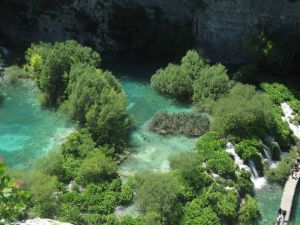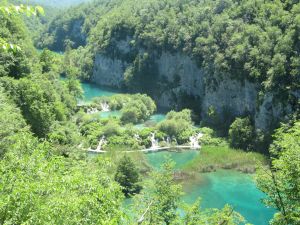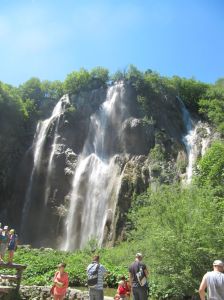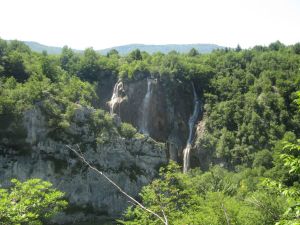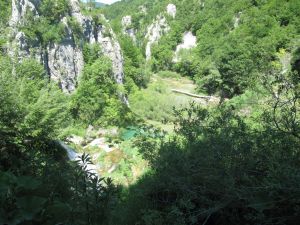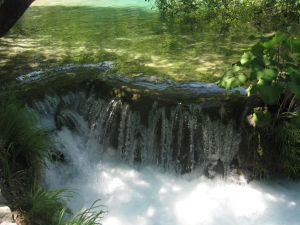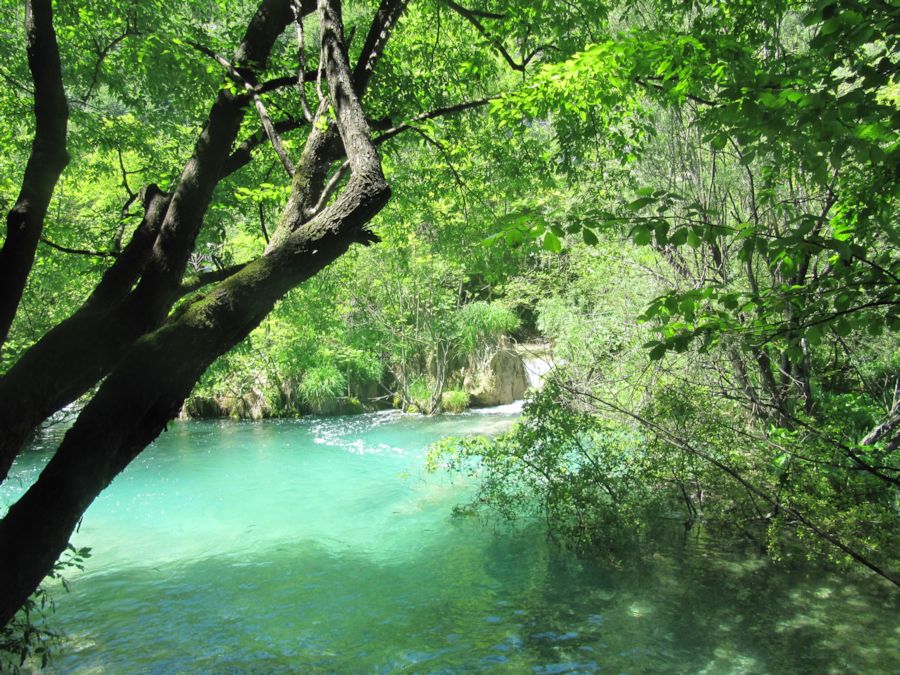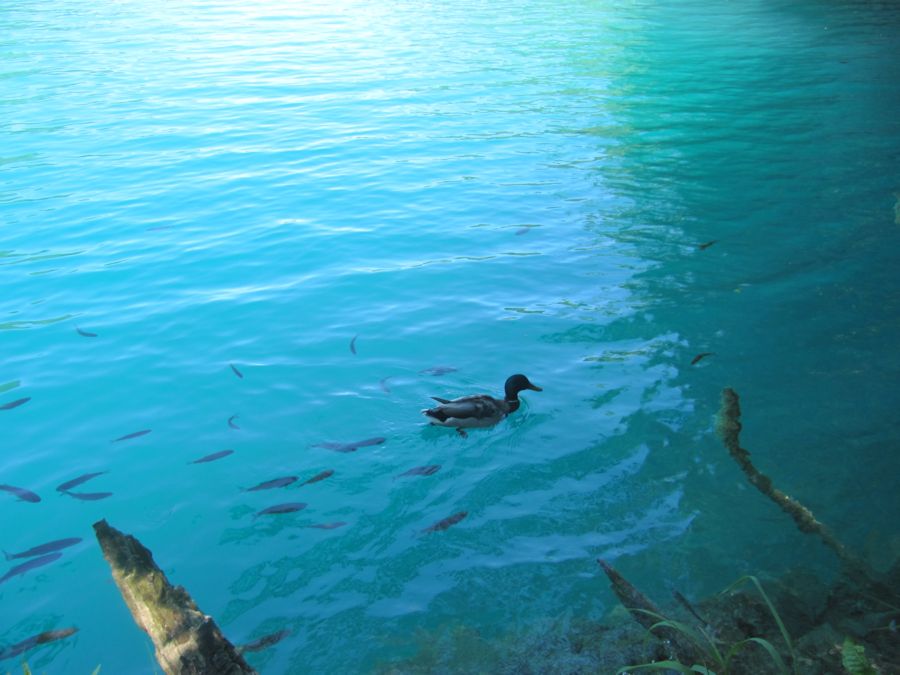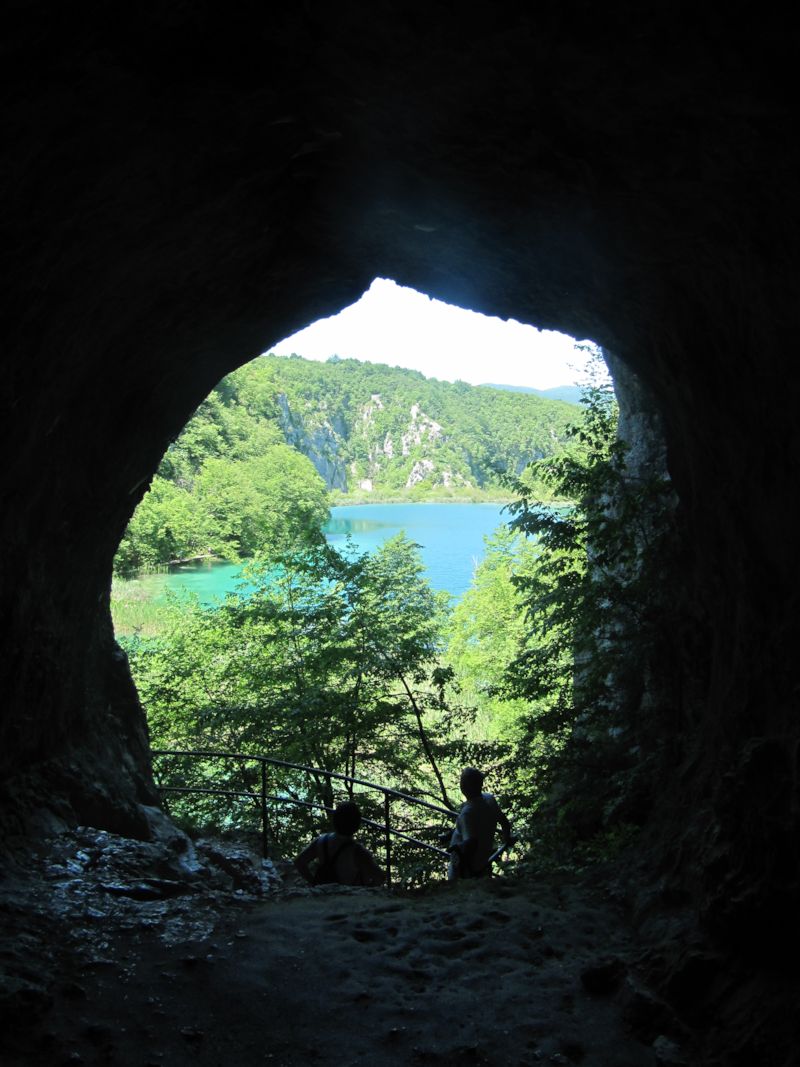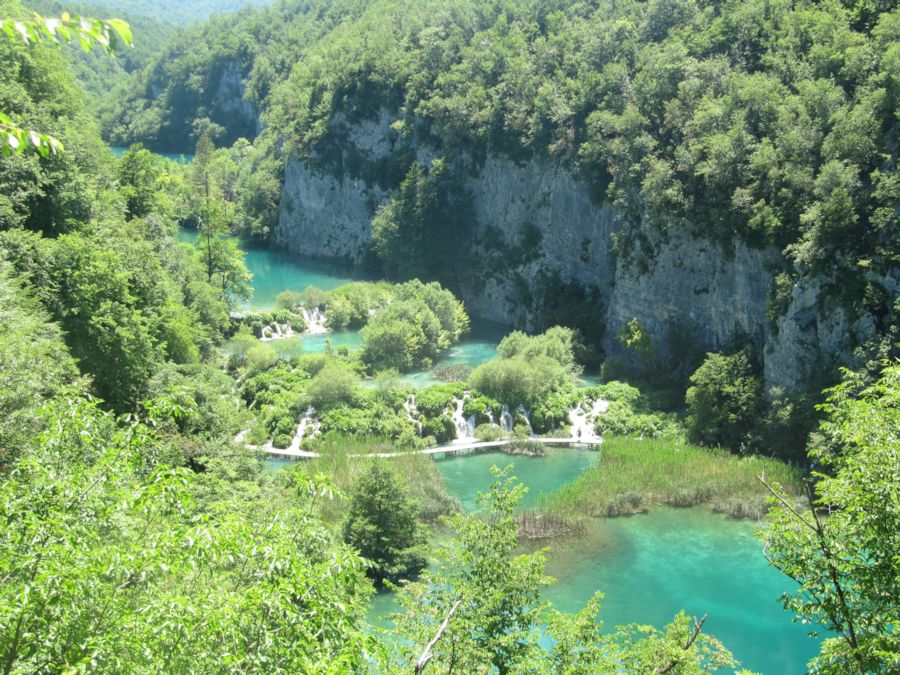
Plitvice lakes National Park is beautiful miracle of nature that you can find just in about two hours’ drive from Crikvenica.
The national park is world famous for its lakes arranged in cascades. Currently, 16 lakes can be seen from the surface. These lakes are a result of the confluence of several small rivers and subterranean karst rivers. The lakes are all interconnected and follow the water flow. They are separated by natural dams of travertine, which is deposited by the action of moss, algae, and bacteria. The particularly sensitive travertine barriers are the result of interplay between water, air and plants.
The lakes are renowned for their distinctive colors, ranging from azure to green, grey or blue. The colors change constantly depending on the quantity of minerals or organisms in the water and the angle of sunlight.
The interplay between the Park’s geographic location (60 km air distance from the sea) inland from Mt. Velebit, on the border between the continental and maritime precipitation regime at an altitude of 418-1279 m, and its base geology reflected in various karst features, enabled the development of such abundant and diverse plant life. The Park area is rich in narrowly or more widely distributed endemic species (72). Of special value are the endemic species described for the first time in this area: narrow-leaved bellflower (Edraianthus tenuifolius), Thor’s buttercup (Ranunculus scutatus), and the Dalmatian scilla (Scilla litardierei) a species abundantly distributed in the vegetation of the Park’s lowland wet meadows.
The Park is also recognised for its many species protected by the Nature Protection Act of Croatia (22 species), of which we should single out the lady’s slipper – the most beautiful orchid in Europe. Being a rare and endangered forest plant, it is listed in the Croatian Red Book of Plant Species and the IUCN Red List under the category of endangered taxa.
Another curiosity of the Park is its carnivorous plants.
The common sundew (Drosera rotundifolia) grows on the peat bogs in the Park area. Due to the rareness of such habitats, this plant belongs to the rare species of Croatian flora. In the vegetation of the Park’s lowland wet meadows we can find the common butterwort (Pinguicula vulgaris) – a rare carnivorous plant on the IUCN Red List in the category of vulnerable taxa, as well as the lesser bladderwort (Utricularia minor) – a very rare aquatic carnivorous plant.
There are about twelve species of amphibians in the Plitvice National Park, which is a quite numerous vertebrate group, while reptile species are relatively few due to long winters and the thick snow cover.
The 157 bird species recorded so far is the third largest population of birds among the national parks of Croatia. Particularly interesting is the white-throated dipper – a rare bird dependent on clean aquatic habitats.
The Plitvice Lakes National Park is also home to 50 mammal species: dormouse, shrew, vole, hedgehog, pine marten, beech marten, wild boar, and others. Recent studies have determined 20 bat species living in different habitats, such as holes, caves, underneath tree bark, tree hollows, and so on. Particular interest is often aroused by the population of wolf, roe deer, red deer, wildcat.

